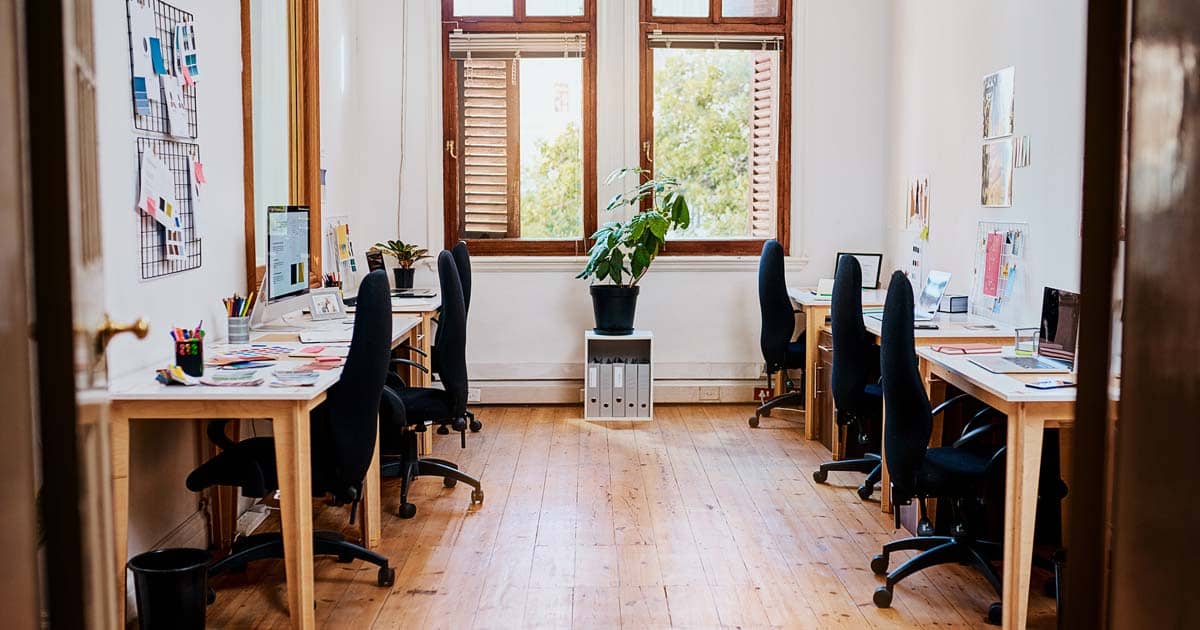Designing Small Office Spaces Post Pandemic

The pandemic altered the way people worked, shopped, and interacted with one another. The pandemic has ushered in the “work from anywhere” trend, with analysts predicting that by the end of 2021, about 25 to 30 percent of the global workforce will be working remotely.
Prior to the pandemic, most businesses used the office as an official workspace for their employees. However, after the pandemic, the status quo will completely change. While different economies around the world begin to recover, the office will become a secondary location for routine meetings and team-building activities, especially for knowledge workers.
Business models can achieve just as much with a remote workforce as they can with an office-based workforce, thanks to recent advancements in information and communication technologies. As a result, businesses will increasingly adopt the hybrid work model, which combines home offices with traditional office buildings.
In this article, we look at how post-pandemic office functions are becoming more popular and how this is a practical shift for offices with limited space.
Minimalist Design
In the post-pandemic world, employees expect the workplace to remain simple and free of anything over-the-top or too trendy. Maintaining a minimalist aesthetic for a small office space is both functional and appealing to the eye. If you want an interior design that allows you to think clearly and with less disruption. Furthermore, reducing clutter allows for the creation of multi-functional office designs. Having a minimalist design also allows owners to reduce office renovation costs especially during office reinstatement.
Co-Located Spaces
The office is gradually evolving into a collaborative and problem-solving environment, and the design must adapt to accommodate this shift. This transformation may entail downsizing and decentralizing your headquarters, depending on your business needs. Again, minimized time and cost during office reinstatement.
Your organization can create inexpensive collaboration spaces such as relaxation zones as well as breakout areas and at the same time ensuring a stronger focus on the community by complementing your central headquarters with smaller offices closer to employees.
Accommodate Video conferencing
Every company in the future will have employees working remotely, necessitating the use of virtual meetings as it doesn’t make sense for everyone to log into their devices to participate in the meeting because some team members are physically present in the office. The simplest office interior design solution to this problem is to incorporate integrated technology into the office space, such as panoramic views for video conferencing, furniture with built-in microphones and cameras, and interactive whiteboards.
Social Spaces for Periodic Physical Events.
One significant disadvantage of remote working is the potential for isolation from coworkers. Despite attending virtual meetings on a regular basis, many employees have felt lonely and yearned to meet with their coworkers in person. Video conferences have limited body language, which can lead to misinterpretations and make team bonding difficult. Companies will still use physical office spaces after the pandemic to organize periodic physical events to help create strong bonds that influence their teams throughout the year. This is where owners will need professional designers to achieve a strategic office space planning that is tailormade for the company.
Provisions for Better Health and Sanitation
Sanitation in the workplace will be more important in post-pandemic planning office renovations. To mitigate the operational burden as well as ensure easy adoption of sanitary practices, your company should strive to incorporate health-friendly materials. Furniture with antimicrobial surfaces or that is easy to disinfect, for example, should be used more frequently. Copper could also be used instead of stainless steel for elevator buttons and other frequently touched areas due to its antimicrobial properties.
Takeaway
While most businesses allow employees to work from home at least part of the time, it’s important to remember that distributed collaboration has a long history. Supportive facilities, innovations, and organizational processes are necessary but not sufficient for productive collaboration, as history and current experience demonstrate.
In-person touchpoints that allow people to clarify and align expectations, refresh rules and work practices, and build or restore trust are still needed. It is all the more important to bring people back together in offices to deliver on those human needs in a world that allows and leverages work from home at scale.
Talk to experienced office design professionals for your office space planning to get the best office interior design solutions for your small office space, post pandemic.
